Seclusion, in Style — These Are the Best Privacy Screens If You Want a Stylish Way to Block Out Neighbors and Passersby
They're a solution for overlooked gardens, hide unsightly views, and help you create a stylish outdoor sanctuary — these privacy screens get the job done
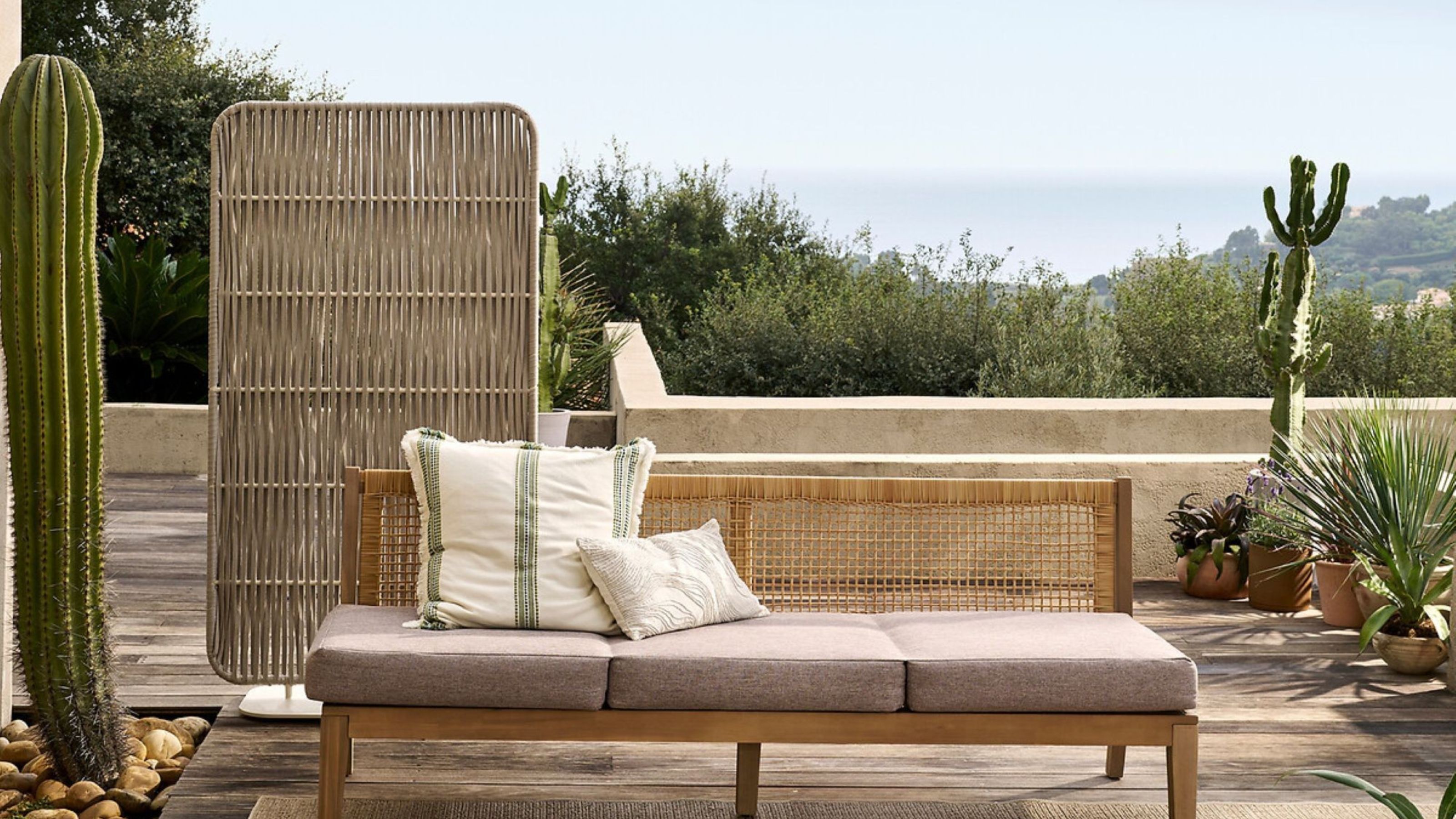

Unless you are blessed with acres of land to distance yourself from neighbors, you're probably stricken with figuring out how to make your outdoor space feel truly yours. Lucky for you, there's an easy fix for that: privacy screens.
The best privacy screens act as barriers — they're a clever garden screening idea that can create a sense of retreat, zone your outdoor space, and even act as decorative features. They come in all sorts of materials, from wood variations like teak and acacia to metals, including steel and aluminum, and can enhance the look of your garden in more ways than one.
Unlike fences or garden walls, privacy screens are typically more portable, allowing you full control over where they are in your space. Nosy neighbors to the left? Privacy screen. Street-facing patio? Privacy screen. Need to hide the condenser unit? You guessed it, a privacy screen is perfect for that.
"Privacy screens hold the utmost importance in outdoor spaces: they impart a feeling of seclusion and safety," landscaping expert Eduard Negodenko of Avanti Landscaping shares. "They assist in creating a personal haven to lounge or entertain without any sense of discomfort."
With a handy privacy screen, your backyard can feel like a true extension of your home. So below, I've rounded up nine of the best privacy screens in terms of style (this is Livingetc after all). The key to creating your outdoor oasis awaits.

Often times, privacy screens can act as barriers in your backyard design to section off one area from the next.
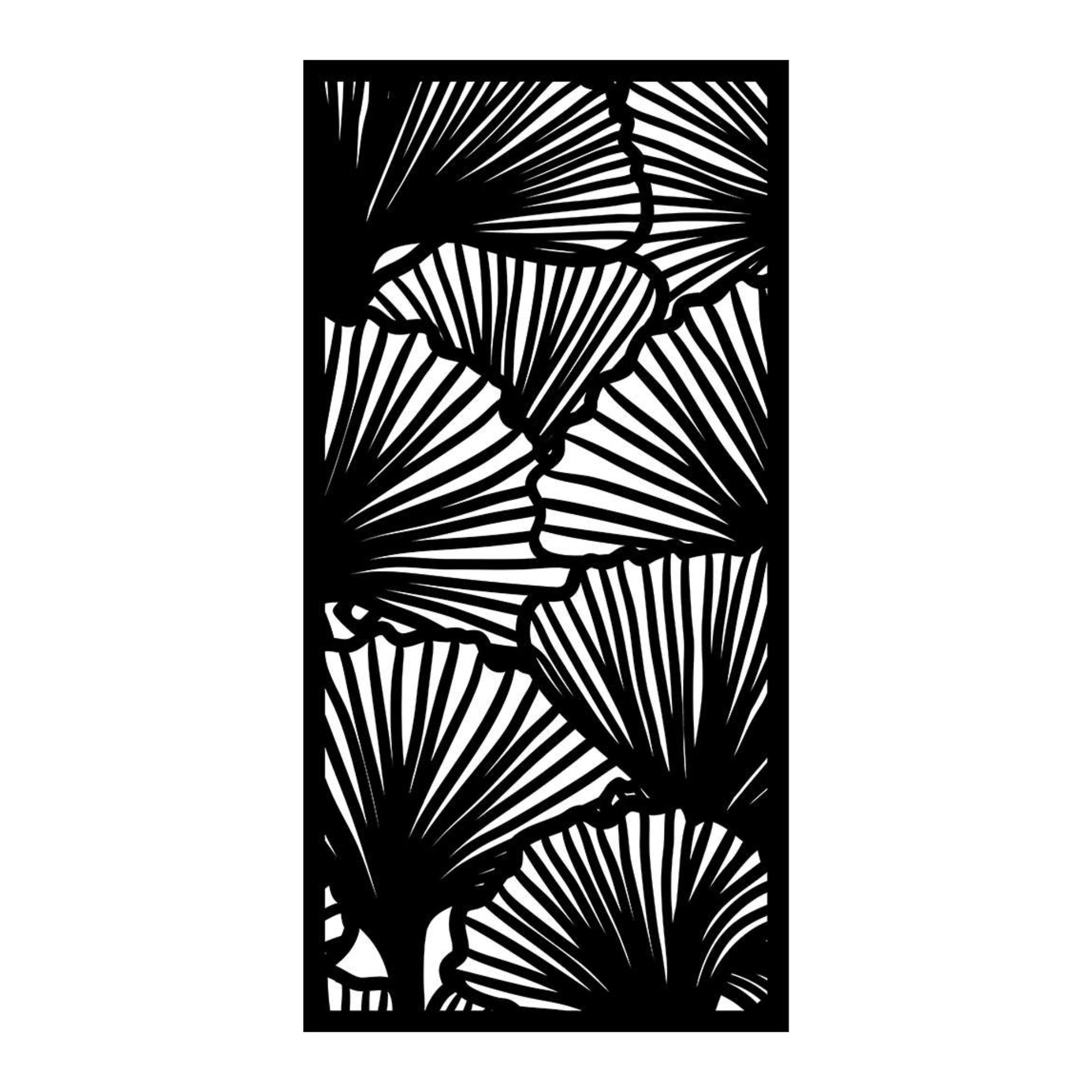
Turn your backyard into a private tropical oasis with this privacy screen and its pretty palm leaf motif. A blend of wood powder and recycled plastic forms this strong and durable screen, ready to withstand any weather conditions. It features a matte finish on both sides, meaning it'll look just as good on the front as the back, and it comes in a number of different sizes, as well as thicknesses (either 16mm or 5mm). However, for utmost durability, the brand recommends the 16mm thick screen if you plan on staking it in the ground with aluminum posts. And since this screen comes in three different colors, you can choose a style to match your space.
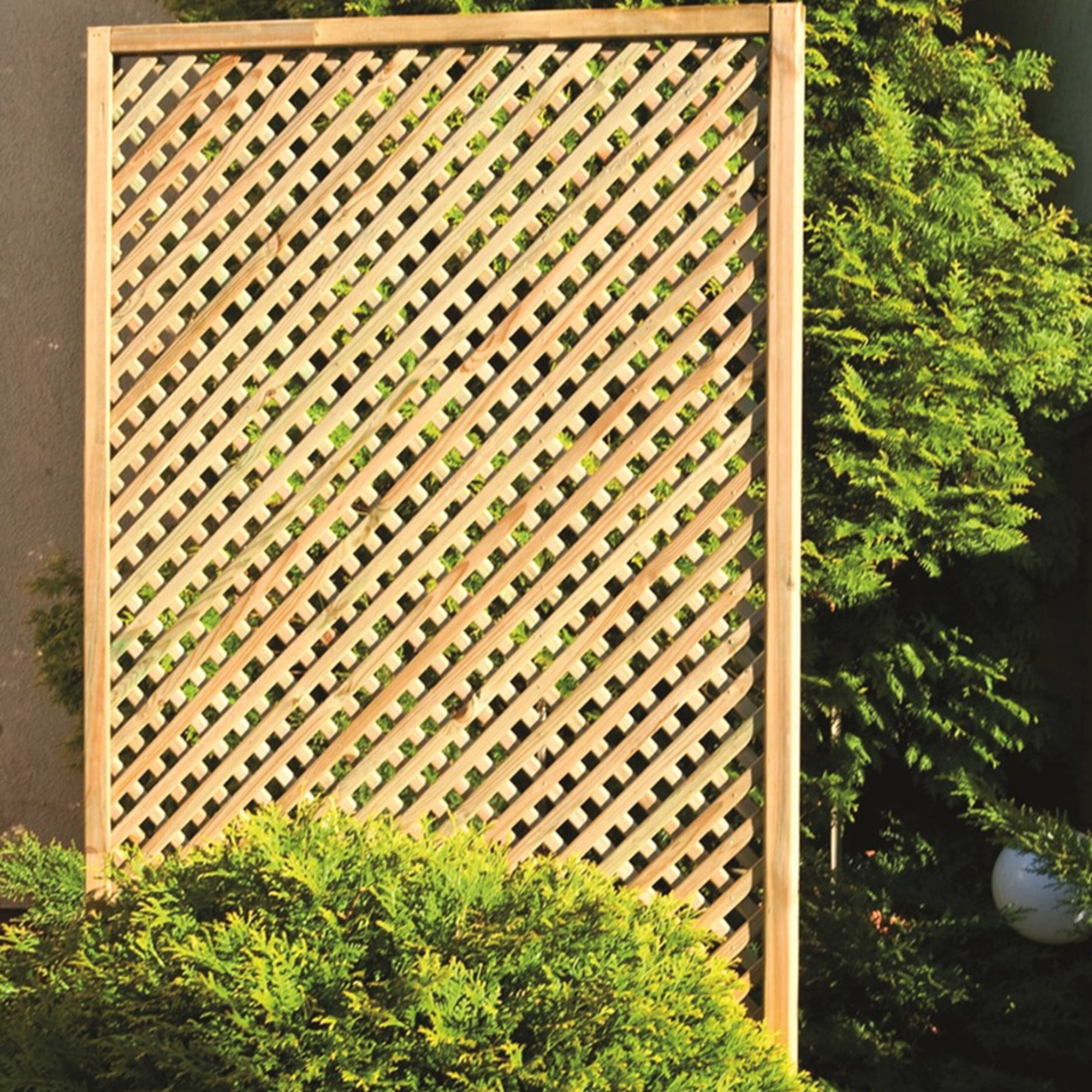
Looking for something natural to tastefully complement and privatize your outdoor space? Opt for a wooden screen with a trellis design. This style is made from pine and spruce, two wood types known for their durability. It's also pressure-treated for longevity in outdoor environments. Along with this screen, you can buy fence post holders and a hole digger to properly stake this screen into the ground to create maximum privacy. For a stylish look, place a climbing plant nearby to hook onto this screen and create a naturally beautiful private space over time.

This privacy screen is unique because of its built-in planter, which allows for ultimate privacy and style. Not only that, but it features several customizable features. You can choose from over 20 decorative designs for the screen backing — from simple horizontal beams to floral motifs. You can also change the design of the planter. And for convenience, you can add built-in lights and wheels, allowing for extra ease of use. You can also choose from a variety of colors, however, every model is made from the same composite material, ensuring durability and little maintenance over time. This privacy screen planter is on the larger size at 147cm high x 148 cm wide, so it's sure to provide ample privacy in your outdoor space.
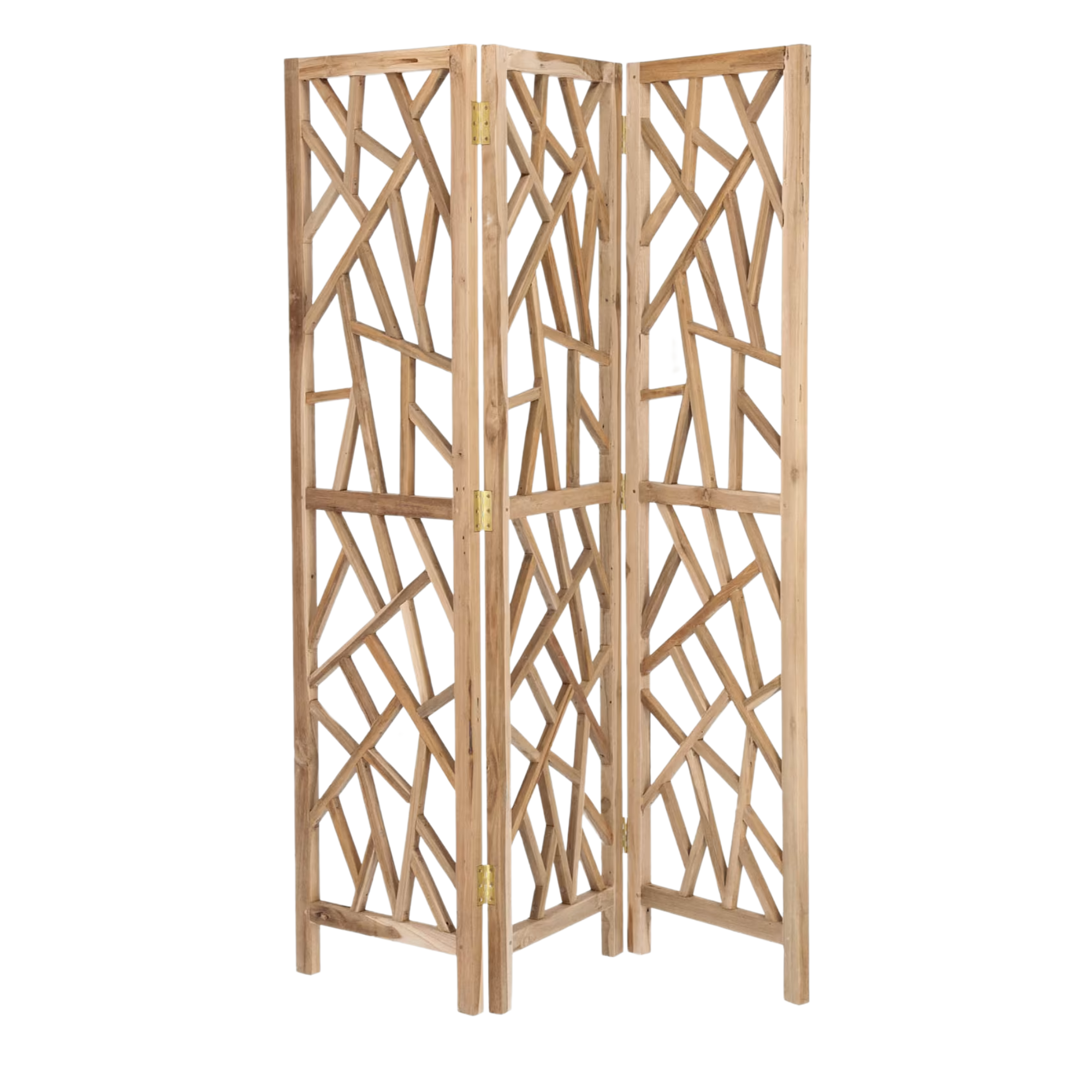
If you're tight on space, but still need some sort of privacy, a folding screen might be the right option for you. This screen is small, at 180cm high x 135cm wide, but still acts as an ideal privacy solution. Its small size makes it easily movable, and it folds flat, so when not in use, it can easily be stored away. When fully extended, this screen presents a detailed mosaic-like design that will add intricate style to your outdoor space. Since it's made of solid teak, it's long-lasting and can survive most weather conditions. If you're looking for apartment balcony privacy ideas, this could be the solution.

Sleek, modern, and affordable. This privacy screen is one of the best IKEA products for good reason. It's made from solid acacia wood (a great choice for outdoor furniture) and features an acrylic stain. It measures about 140cm in height, which is a bit shorter compared to other privacy screens, but its vertical wooden beams give the illusion of added height. By itself, this screen could help transform your backyard or patio into a private and stylish retreat, but with a few of these screens, you could easily create different zones in your garden, such as a dedicated outdoor living room.
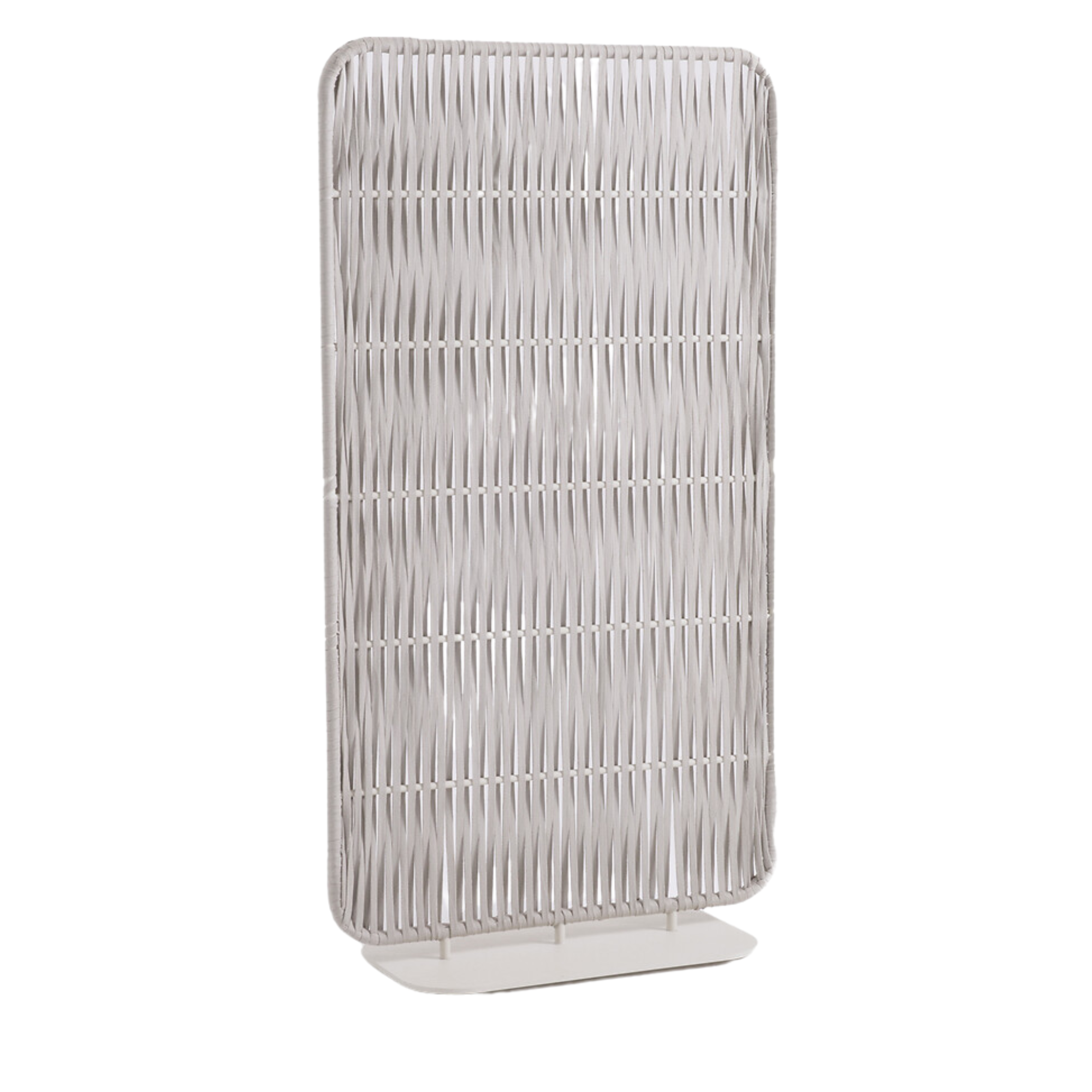
This privacy screen has a slightly different look than typical designs, but it's nonetheless an ideal option for ultimate seclusion. The screen features a galvanized steel frame, a sturdy steel base, and is woven with rope to create a stylish textured surface. Because of its woven finish, it allows some light to pass through, but provides ample privacy from neighbors in close proximity. This screen stands at 167cm high and is 90cm wide, making it ideal for small patios. And because of its modern style, it could easily be brought indoors to act as a stylish room divider.
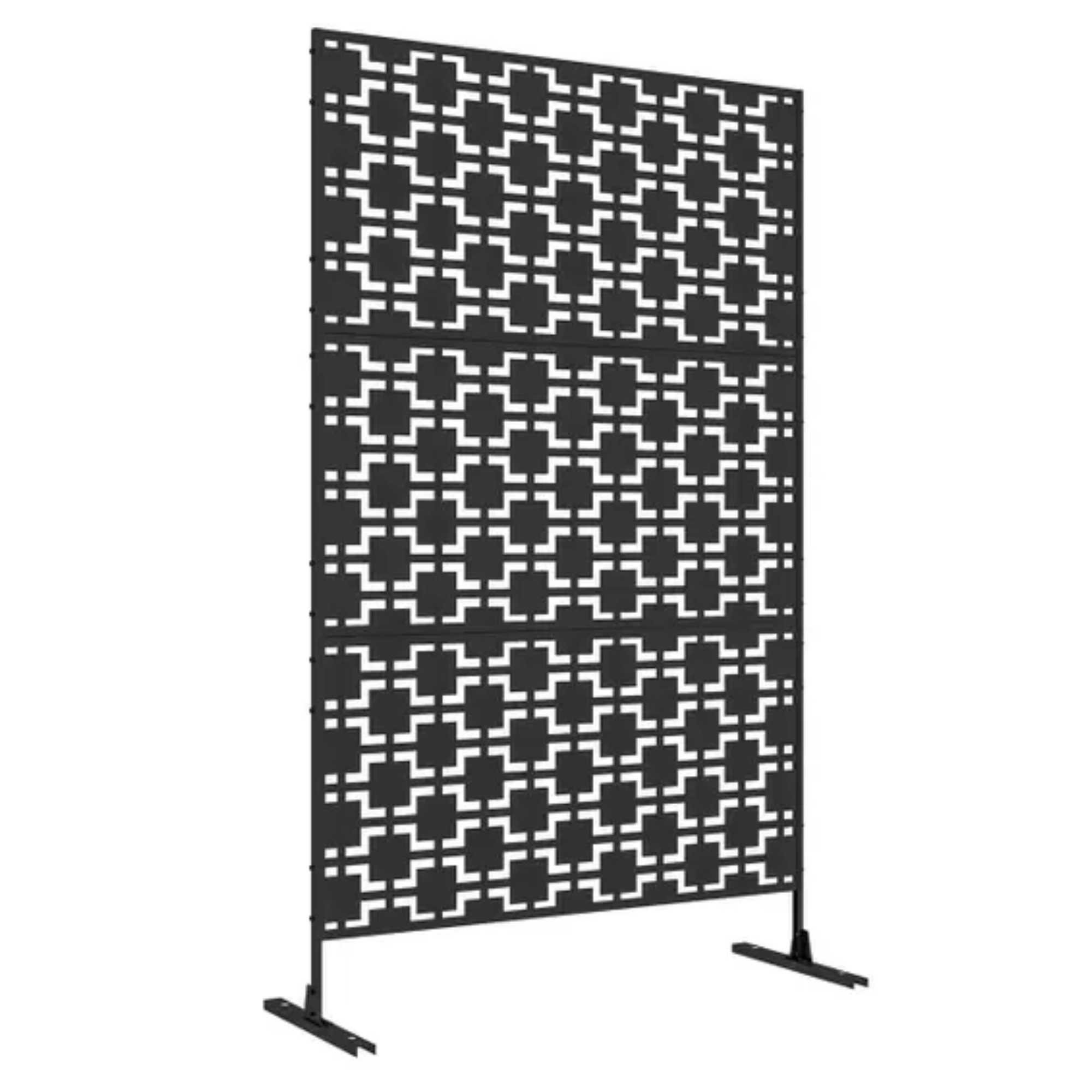
The unique geometric pattern of this privacy screen will add some modern flair to your outdoor space. Its motif is large enough to block unwanted attention to your garden, but still lets ample sunlight and breeze through its openings. Made from steel, it's durable and can withstand any type of weather event. It comes with a base and screws so it can easily be mounted to the ground, or you can choose to remove the base and hang this on an existing fence as a decorative detail. At 198cm tall and 122cm wide, this screen is large and can ensure stylish privacy.
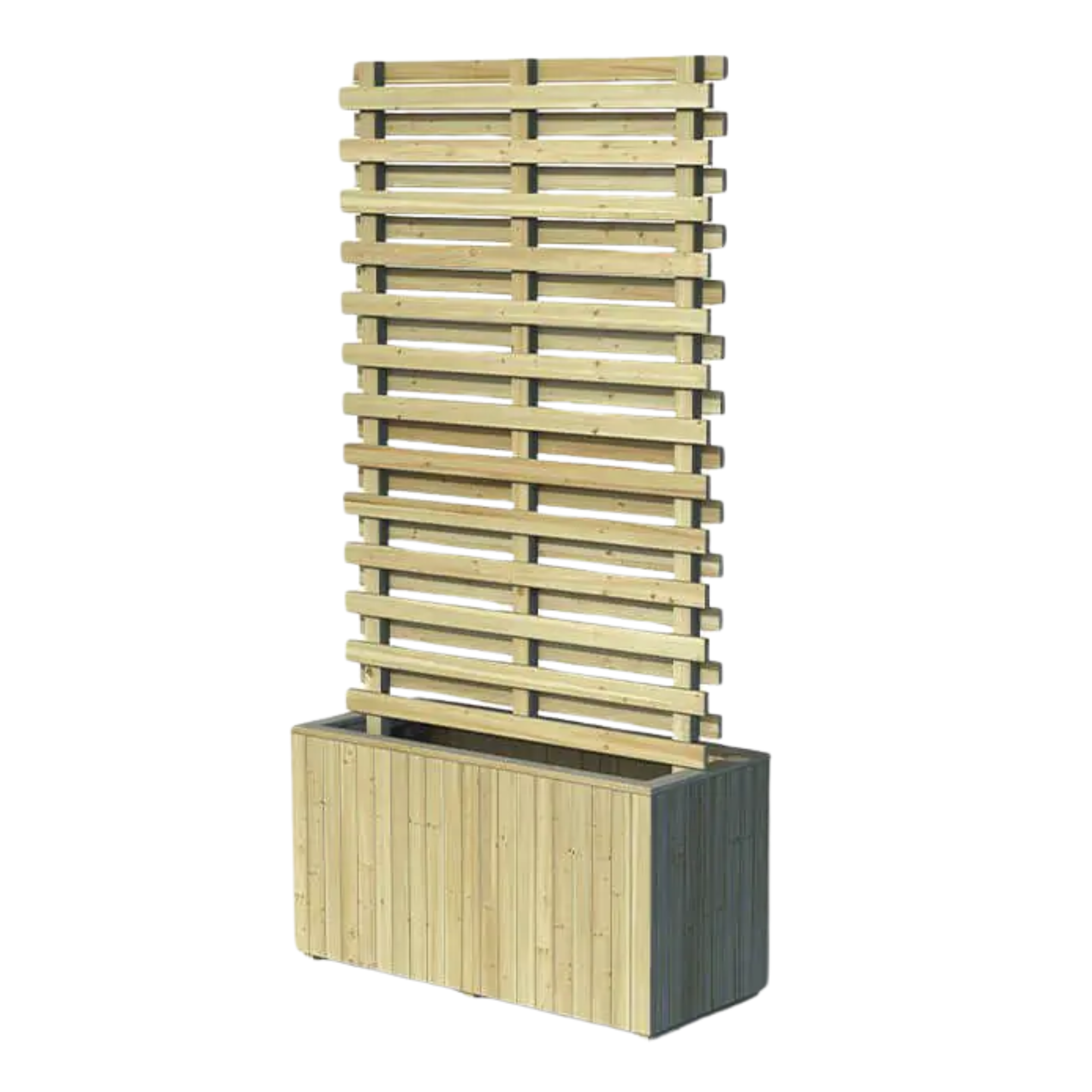
There's nothing I love more than furniture that does two things at once — and this privacy screen planter duo is the perfect example of that. With its staggered horizontal wood slats that rise 180cm and its stylish planter box base, this model provides utmost privacy while bringing some plant life into your backyard design. The wood is pressure-treated to prevent rot, meaning this screen-planter duo will look good in your outdoor area for years to come. And because of the staggered detail of its wood slats, plants from the planter box can easily climb up the wall, creating a naturally beautiful visual in your backyard.
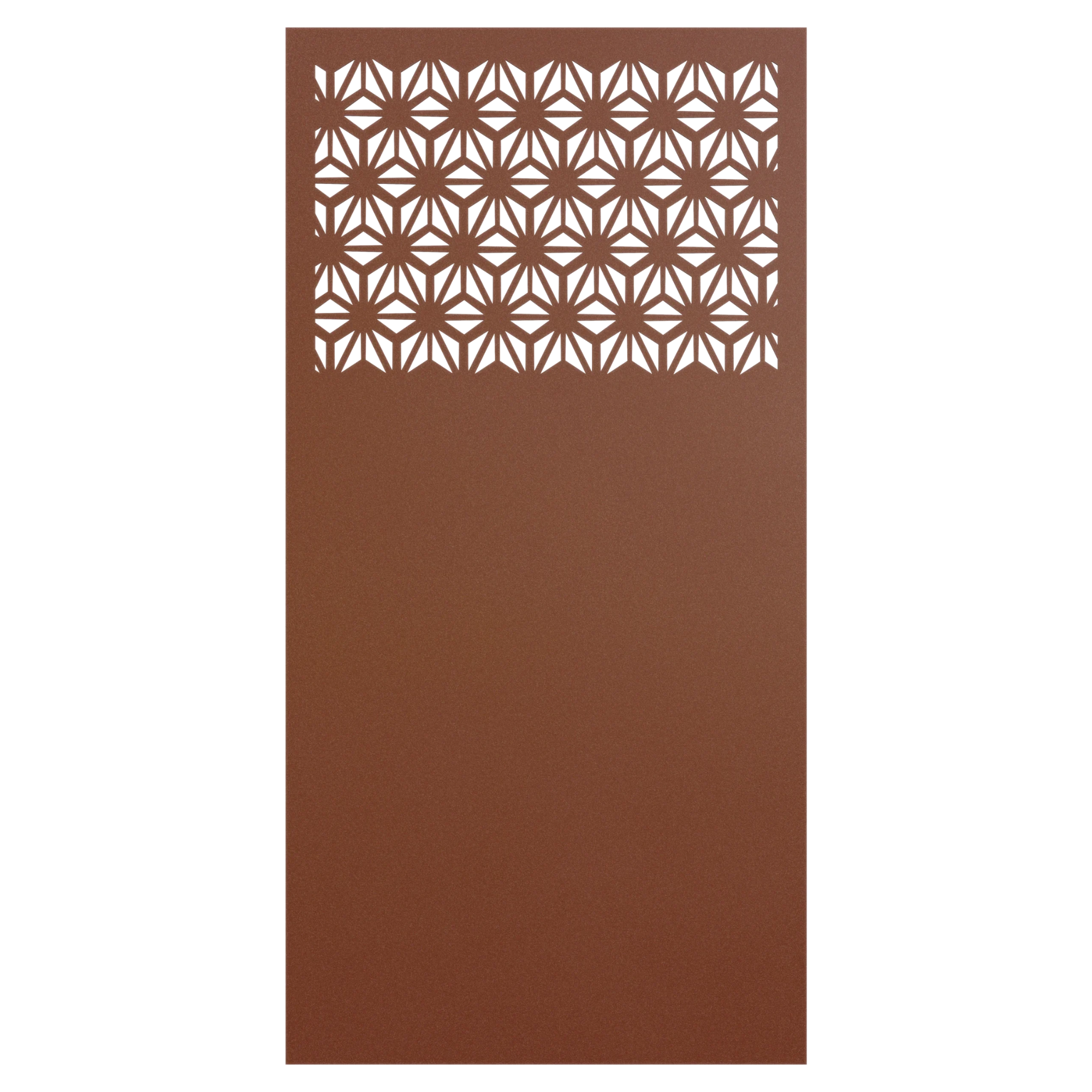
This privacy screen provides a significant amount of privacy thanks to its solid base, while the uppermost third features a unique geometric design. Made from powder-coated aluminum with a brass-colored finish, this privacy screen will tastefully blend in with the existing decor of your garden and also make a unique style statement. It provides a significant amount of seclusion, so if you live in a densely populated neighborhood, it could be your solution to creating privacy. With six different finishes and three different sizes to choose from, you can decide which screen will look best in your space.
FAQs
How to Choose the Best Privacy Screen for Your Outdoor Space?
The best privacy screens should seamlessly blend into the design of your outdoor space while also providing a necessary sense of seclusion. According to Eduard, finding the best privacy screen "involves consideration of the overall design visions for the space, required privacy levels, and materials capable of enduring the local weather condition."
In terms of design, it's best to choose a privacy screen that complements your existing decor or, "Start with the general architectural style of your house," recommends Jordan Clough of Richardson & Associates Landscape Architecture. Features like railings, shutters, or even decking can help you determine the best privacy screen style for your space.
The Livingetc newsletters are your inside source for what’s shaping interiors now - and what’s next. Discover trend forecasts, smart style ideas, and curated shopping inspiration that brings design to life. Subscribe today and stay ahead of the curve.
Another important factor is how much privacy you require. Of course, any privacy screen will provide some degree of seclusion, but certain styles work better than others. Styles with large motifs might act more as a decorative detail, while screens with staggered slats can be better for ultimate seclusion.
And finally, one of the most important features to consider is the materials it's made of. Eduard mentions that there are some outdoor furniture material that lasts longer. Woods like teak and acacia are strong and durable, as are metals like aluminum and steel. Both wood and metal designs can patina over time, giving your privacy screen and overall backyard design some character. If you can, avoid plastics that tend to be flimsy and will fall apart after one season.
Now that you have a screen to privatize your outdoor space, discover the best garden furniture that'll make your patio look just as good (if not better) than your living room.

Devin is a New York-based style editor for Livingetc who is keen on all aspects of personal style. From a young age, she was drawn to the design world, and she loves sharing design choices with her readers, from explaining how to incorporate trends into interior spaces to sourcing the best products for your home. Devin believes style should be inclusive, exciting, and at its core, fun.